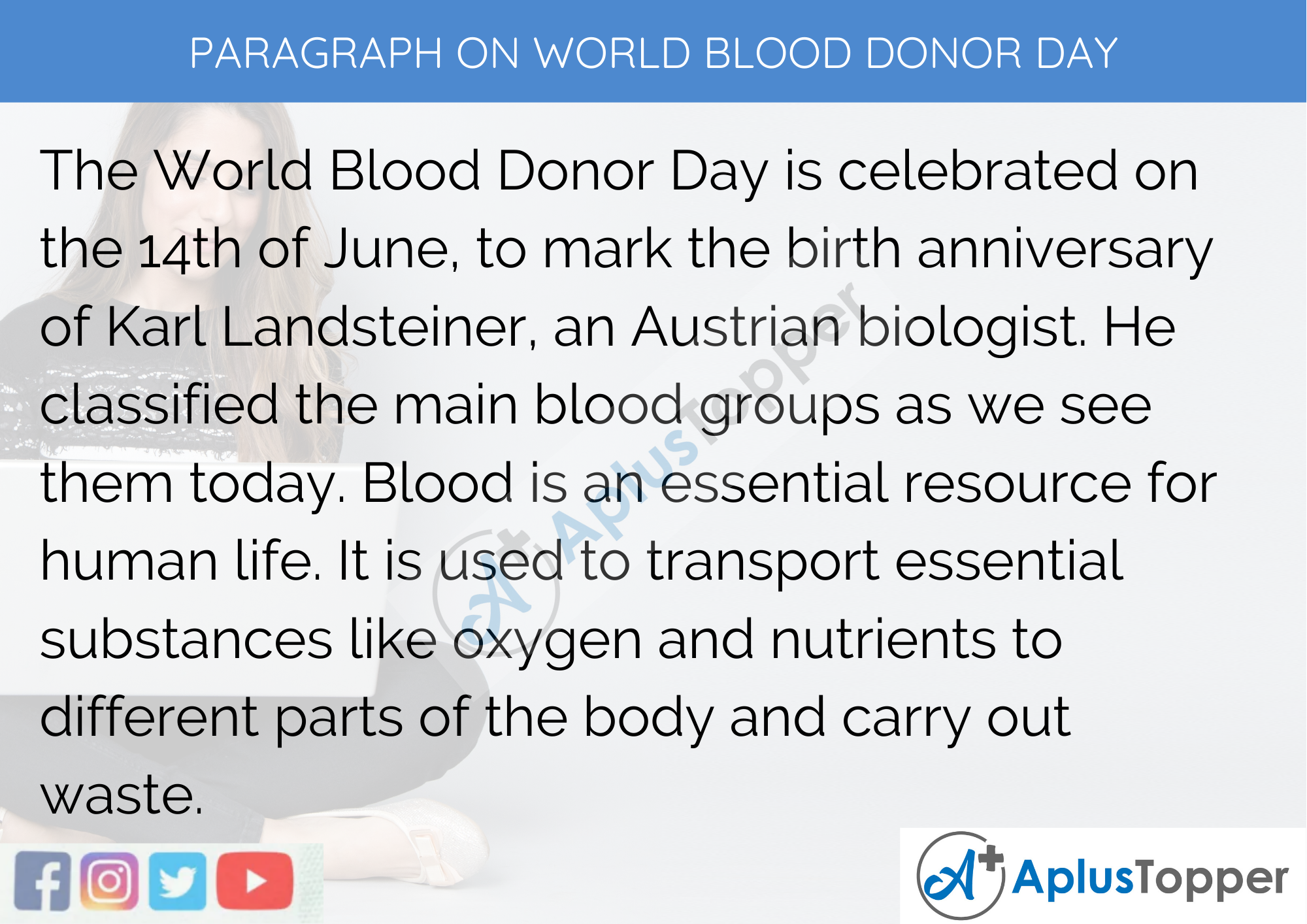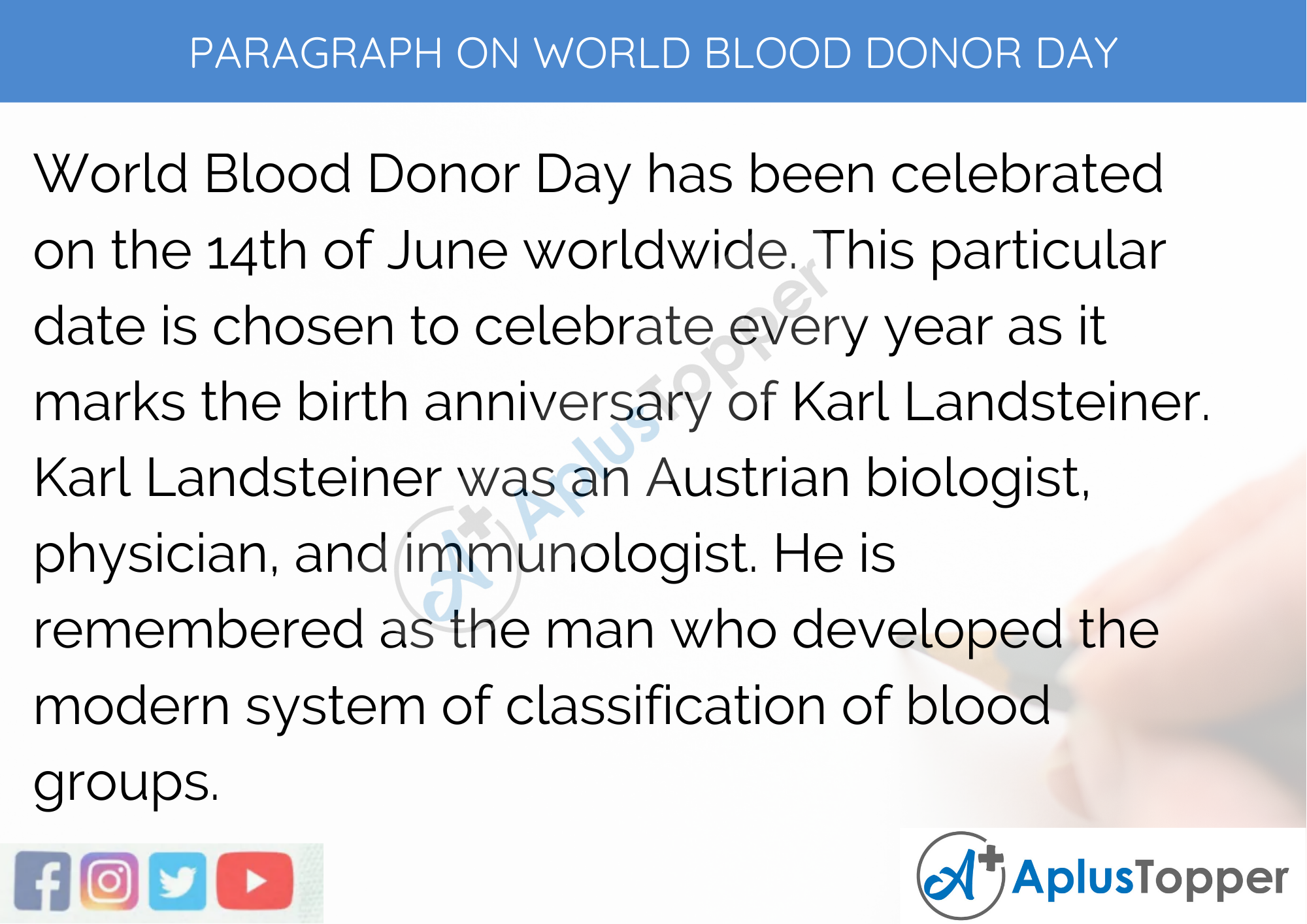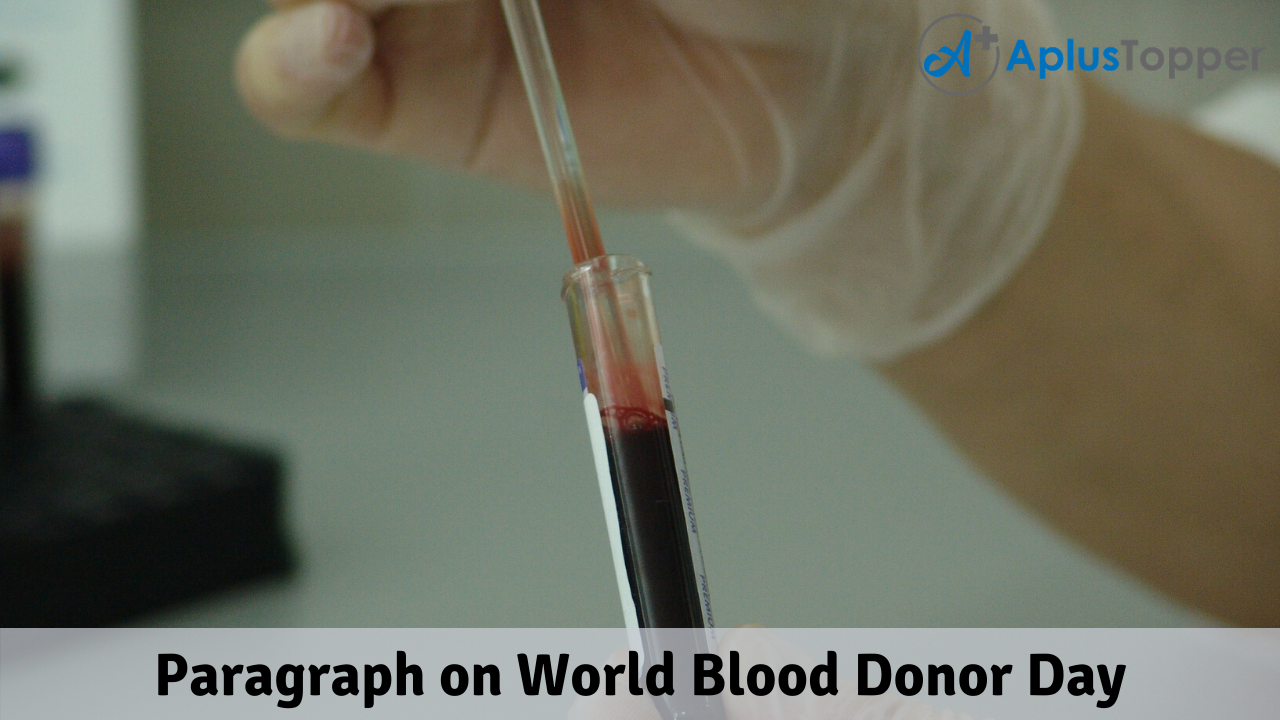Paragraph on World Blood Donor Day: Every year, the 14th day of June is being celebrated as World Blood Donor Day worldwide. The day is organized and celebrated in order to create awareness among the people all over the globe. This day is observed to bring the focus of the people towards the importance of safe blood and blood products. The occasion also appreciates the contribution of blood donors in saving lives with blood. To know more about World Donor Day, we have provided you with four paragraphs to refer to and study.
You can read more Paragraph Writing about articles, events, people, sports, technology many more.
Paragraph on World Blood Donor Day – 100 Words for Classes 1, 2, and 3 Kids
The World Blood Donor Day is celebrated on the 14th of June, to mark the birth anniversary of Karl Landsteiner, an Austrian biologist. He classified the main blood groups as we see them today. Blood is an essential resource for human life. It is used to transport essential substances like oxygen and nutrients to different parts of the body and carry out waste. There is no substitute for blood. Kind-hearted blood donors are the only source of blood when someone requires it during an emergency.

Paragraph on World Blood Donor Day – 150 Words for Classes 4 and 5 Children
World Blood Donor Day has been celebrated every year on the 14th of June since 2005. The first event was organized as a joint initiative of the World Health Organization (WHO) and the International Federation of Red Cross and Red Crescent Societies to focus the world on the need for safe blood and blood products. The World Health Organization has identified World Blood Donor Day as one of the eight official global public health campaigns, along with World Health Day, World No Tobacco Day, World Tuberculosis Day, World Malaria Day, World Immunization Week, World Hepatitis Day, and World AIDS Day.
Paragraph on World Blood Donor Day – 200 Words for Classes 6, 7, and 8
Safe blood is required universally. It is one of the vital resources for both treatments and urgent interventions. It can give a longer and high quality of life to patients suffering from life-threatening conditions.
But the availability of safe blood is scarce. The high-income countries contribute 42% to blood collection despite being home to meager 16% of the world’s population. This leads to struggle in most low- and middle-income countries to get safe blood because donations are low and blood testing equipment is scarce.
To increase awareness among people regarding this issue, WHO started organizing World Blood Donor Day on the 14th of June every year from 2005. The main motive behind this was to thank the blood donors and encourage the rest of the people for this noble cause.
The theme for World Donor Day in 2020 was “Safe blood saves a life.” The slogan given to the occasion was, “Give blood and make the world a healthier place.” It was a call for people around the world to become life-saviors by donating blood regularly and impacting the health of the community at large. WHO’s statistics highlights that regular blood donation by voluntary blood donors is necessary to ensure the supply of safe blood. A virtual rally was also announced by the World Health Organization for the COVID-19 pandemic.
Paragraph on World Blood Donor Day – 250 to 300 Words for Classes 9, 10, 11, and 12, And Competitive Exam Aspirants
World Blood Donor Day has been celebrated on the 14th of June worldwide. This particular date is chosen to celebrate every year as it marks the birth anniversary of Karl Landsteiner. Karl Landsteiner was an Austrian biologist, physician, and immunologist. He is remembered as the man who developed the modern system of classification of blood groups. His work also included identification of the Rhesus factor, which enabled the physicians to transfuse blood without endangering the patient’s life. The transfusion is the transfer of blood from one person (donor) to another (recipient). He was awarded the Nobel Prize in Physiology or Medicine for his works in 1930.
World Blood Donor Day allows thanking the blood donors who have helped save a large number of lives through their generous effort and encourage the rest of the people to join this noble cause. An adequate supply of safe blood can only be maintained through voluntary unpaid donations. WHO’s goal is to achieve all the blood supplies in the countries through voluntary and unpaid donations. In 2014, 63 countries achieved this target. They got 99-100% of their blood supplies through voluntary unpaid donations, whereas 73 countries were still struggling as they were mostly dependent on family and paid donors.
Themes of World Blood Donor Days across the years:
- 2012: Every blood donor is a hero
- 2013: Give the gift of life: donate blood
- 2014: Safe blood for saving mothers
- 2015: Thank you for saving my life
- 2016: Blood connects us all
- 2017: Give Blood. Give Now. Give Often
- 2018: Be there for someone else. Give blood. Share life
- 2019: Safe Blood for All
- 2020: Safe Blood Saves Lives

FAQ’s on Paragraph on World Blood Donor Day
Question 1.
When was the first World Blood Donor Day celebrated?
Answer:
It was celebrated on the 14th of June 2005 for the first time.
Question 2.
Whose birth anniversary is celebrated as World Blood Donor Day?
Answer:
Karl Landsteiner’s birth anniversary is celebrated as World Blood Donor Day.
Question 3.
What was the theme of World Blood Donor Day in 2020?
Answer:
Safe Blood Saves Lives was the theme of World Blood Donor Day in 2020.
Question 4.
In which field was Karl Landsteiner given the Nobel prize?
Answer:
Karl Landsteiner was awarded the Nobel Prize in Physiology or Medicine.
Question 5.
What is Transfusion?
Answer:
The transfusion is the process of transferring blood from one person (donor) to another person (recipient).
